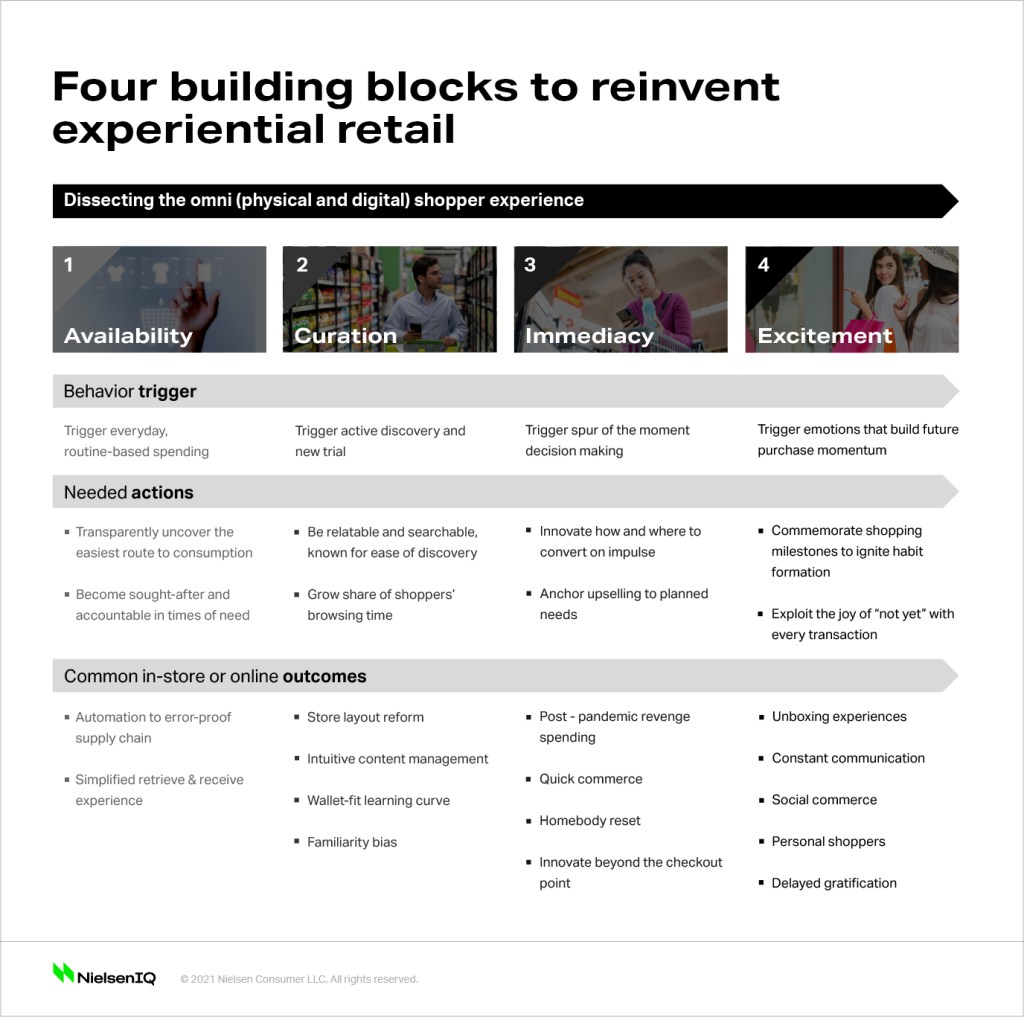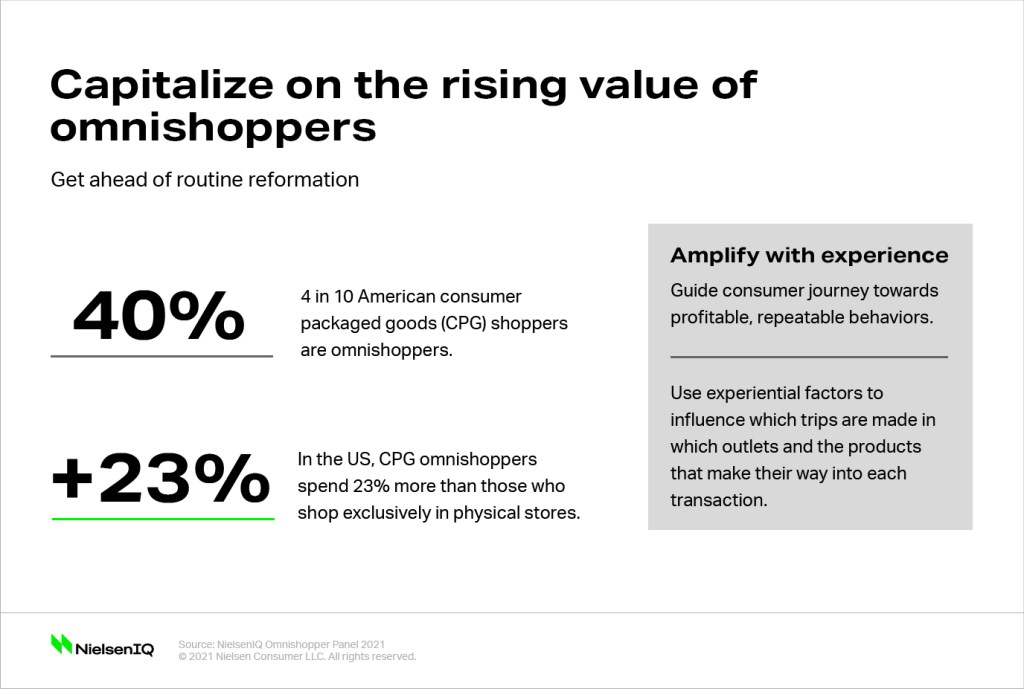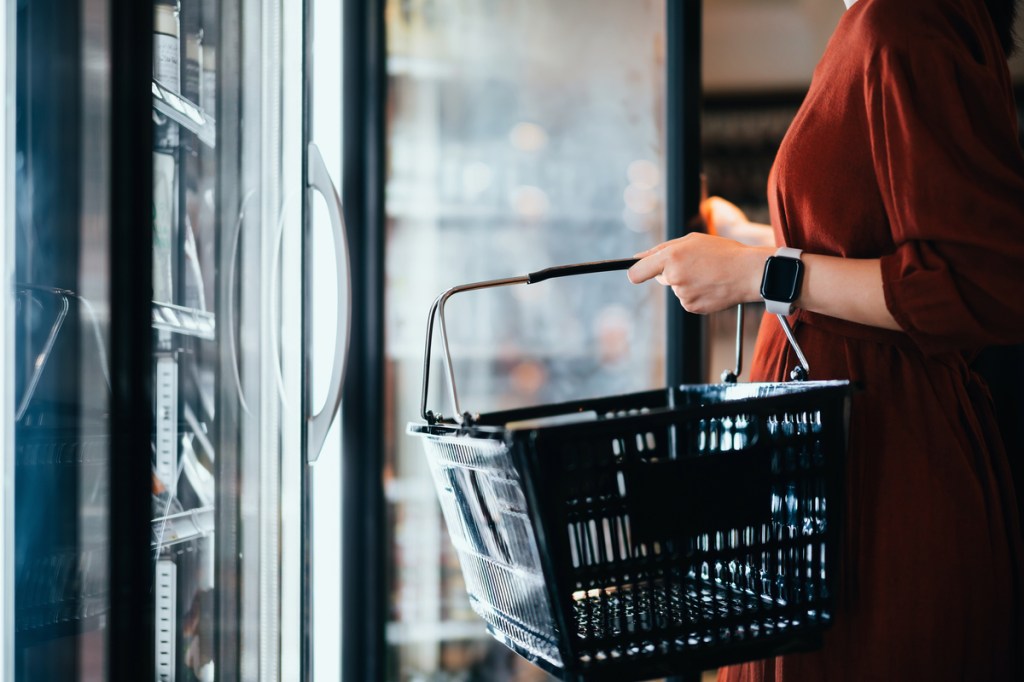Triggers that shape the shopping experience
To today’s consumers, “going shopping” may be less about the actual act of purchasing and more about the holistic, omni-powered browsing experience. As the landscape continues to evolve, the physical or online store of the future may not be a “store” as we know it today, but rather evolve to become more of an experience.
NielsenIQ has identified a framework to help companies optimize their customers’ shopping experience. The four experiential building blocks outlined include: availability, curation, immediacy, and excitement. When each of these elements has been accounted for along the shopper journey, they shape new habits and heighten customer loyalty among today’s omnichannel shoppers.

Lauren Fernandes, Director of Global Thought Leadership at NielsenIQ, says “we’ve reached a pivotal period of routine reformation. Now, an appealing shopping experience has the power to trigger both emotional and behavioral responses to shape new consumer spending norms that will linger throughout and beyond the influence of COVID-19.”
Following continued periods of shopping disruption, consumers will crave reassurance and connection now more than ever before.
“Companies have an opportunity to use experiential factors to guide lasting shifts to how, when, and why consumers shop both in-store or online. When done right, a good shopping experience can trigger trust and opportunity among shoppers,” says Fernandes.
Shopping experiences that maximize customer loyalty
Fundamentally, shoppers expect availability. Consistently delivering on this expectation, whether through on-shelf availability or within a wider omnichannel strategy, will be key to converting the everyday spending of shoppers. Particularly during moments of crisis, having available stock of a relevant product assortment is foundational for customer experience and loyalty.
After a year or more of changed shopping behavior, the way companies can demonstrate reliable access to goods means more than it did before. When businesses address availability in their shopping experience, it’s easier to become the preferred outlet of choice among loyal customers.
When retail shoppers look for products and services, it is curation, or the search and discovery experience, that triggers the opportunity to grow share of voice and, in many cases, share of wallet. The way companies curate relatable content, recommendations, and store layouts forms the foundation of deep shopper engagement. When shoppers are engaged, they’re more likely to explore new information, consider new products, and respond to purchase cues.
Shopping experiences that build purchase momentum
Once shoppers have found what they need, there is a heightened expectation for immediacy in the communications and actions put forth by companies from there. Whether it’s real-time updates on their product’s journey through the supply chain, or the opportunity to augment the end experience with other purchases, there is goodwill and growth on the table immediately following every shopper decision.
Companies who can innovate on the immediacy of a shopping experience can trigger the impulse opportunities to explore “what else” shoppers might consider purchasing. This inspiration needs to be re-invented physically and digitally so that shoppers can be enticed and influenced in unique ways in-store, at the physical checkout counter, when purchasing online, or after the purchase altogether.
Looking ahead to future behavior and habit formation, shoppers crave some level of intrigue or excitement with every purchase. Converted buyers need to be surprised and delighted throughout the experience, so much so that they anticipate and look forward to the next shopping experience.
With ample retail or e-tail offerings at their fingertips, shoppers require an element of joy in the shopping experience, which can ultimately foster connection to a brand or service. Whether creating a unique unboxing experience or infusing customer service elements around picking up items in-store, there is much work to be done to leverage excitement to build purchase momentum and customer loyalty within the shopping experience.
Like the completion of a circuit, every customer’s shopping experience today should strive to incorporate and deliver on the new expectations of availability, curation, immediacy, and excitement. This is hugely important for shoppers who will soon have access to more brick-and-mortar and e-commerce store options to consider as many mandated physical restrictions continue to be lifted across the globe.
Refining omnichannel strategies for the “post-pandemic” shopper
Since the years ahead may not see the complete eradication of the virus, companies need to continue to build omnichannel strategies that meet tomorrow’s consumer needs. In the U.S., one of the leading global markets to have re-opened for in-person shopping, we see many indicators of the permanence and potential profitability of omnichannel shopping.
Recent measures indicate that 40% of U.S. consumer packaged goods (CPG) shoppers are omnishoppers — purchasing from both brick-and-mortar and e-commerce storefronts. For stalwart companies focusing efforts within the post-pandemic physical store domain, they could be leaving a significant opportunity on the table. In fact, CPG omnishoppers in the U.S. spend 23% more than those who shop exclusively in brick-and-mortar stores.

Many companies are wondering what to prioritize with their brick-and-mortar and e-commerce retail strategy and what is required to maintain consumer relevance. The answer is grounded in the four identified layers of the modern shopping experience, which each trigger unique buying behaviors. They represent the marked shift away from the traditional importance of a shopping “destination” toward the shopping experience.



